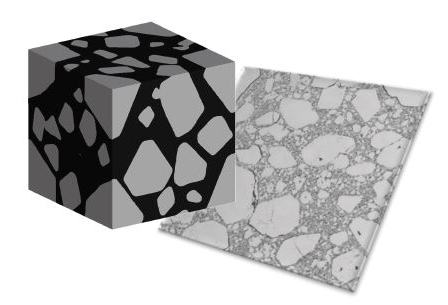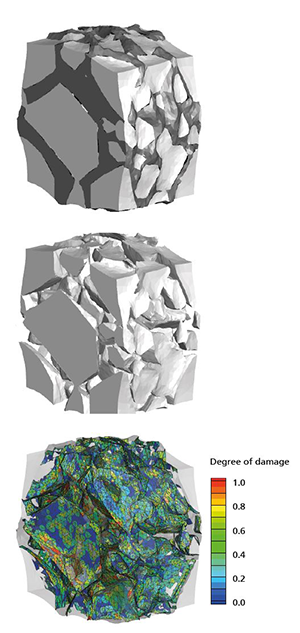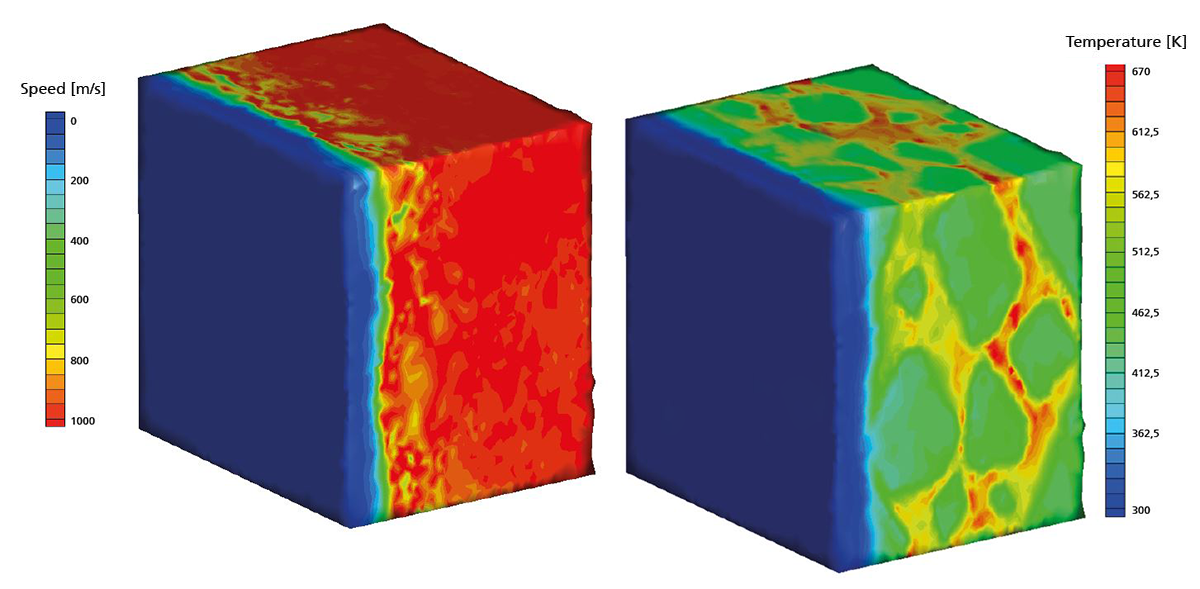Excellence in the further development of Hydrocodes

For many years, hydrocodes, numerical simulation methods for highly dynamic processes, such as crash, impact and explosions, have been used at the Ernst-Mach-Institut. In addition to the use of software from various providers, the institute’s own hydrocodes are being continuously developed, applied in projects and also licensed for external customers.
A particularly demanding field of application is the simulation of initiation processes in plastic-bonded explosives (PBX) on the mesoscale. In this kind of numerical models, the heterogeneous structure, i.e., plastic-based binder and micrometer- to millimeter-sized explosive crystals, is represented in high spatial resolution. The challenge here is to replicate the behavior of the material under rapid mechanical or thermal loading up to possible initiation in order to be able to predict the time when a chemical reaction starts. Here, internal processes, such as the damage that is caused by detachment of crystals from binder or by breaking of crystals, play an important role. Using this type of models, security features of PBX, for example, the insensitivity to shock loads, are being investigated and optimized by changing the composition. The new methods required for this application are implemented in EMI’s own software SOPHIA, which, in this context, is used for the mesoscale simulation of PBX for the German Federal Armed Forces.

